Can you eat ramen noodles on a low-carb diet? I am here to tell you, you can! The warm, hearty broth in our Korean-inspired low carb ramen is full of flavor and low on carbs, making it a meal you can fully enjoy!
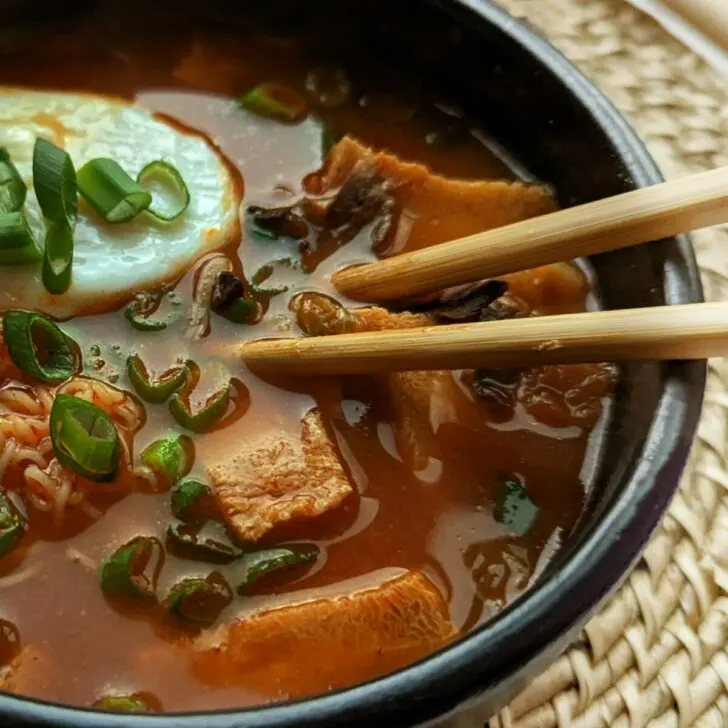
Why You’ll Love This Recipe
When I began counting carbs more carefully, I missed ramen – specifically Korean instant ramen. There’s something about the savory broth and all the spices, so I decided to do something about it; this recipe for low carb ramen is a perfect substitute and always leaves me feeling full and satisfied.
Ingredients You’ll Need
For the Poached Eggs:
- Eggs: Poached eggs are a perfect addition to already tasty ramen. If you don’t like poached, that’s okay! Add a soft or hard-boiled egg instead.
- Distilled White Vinegar: I add a dash of vinegar to the water; it causes a chemical reaction that encourages the egg whites to cook more quickly.
For the Broth:
- Better Than Bouillon: Better Than Bouillon and water act as stock in this recipe. It’s flavorful, easy, and something I always keep in my pantry. For vegan ramen, use Vegetable Better than Bouillon.
- Soy Sauce: Add umami with a little bit of soy sauce. Use Tamari as a gluten-free option and coconut amino acid if you need a soy-free alternative.
- Sesame Oil: Sesame oil adds a nutty, silken texture to the ramen.
- Kimchi: Kimchi is more than just a side dish or another addition to banchan; it’s often the main ingredient! When using kimchi to make soups and stews (jjigae), be sure it’s fermented and sour- the older, the better; this will boost the flavor.
- Gochujang: Korean pepper paste called gochujang is frequently used in Korean cuisine to add sweet heat to a recipe; red pepper flakes, sticky rice, fermented soybean paste, and salt make up the beautiful red paste that adds depth to whatever it cooks in.
- Gochugaru: Adding heat and a slightly smoky fragrance, dried and deseeded chili peppers are the main ingredients in another Korean staple called gochugaru, or Korean chili flakes. Check the container for spice level; they come in mild, medium, or hot (tell me why I know this).
- Garlic: I suggest using four cloves, but don’t let my recipe tell you how much garlic to use – go for it; cook with your heart.
- Ginger Paste: You can use fresh minced ginger here, but it takes longer to incorporate into the broth. Since this recipe is for instant ramen, I use ginger paste.
For the Ramen:
- Shiitake Mushrooms: Fresh or dried shiitake mushrooms work in this recipe. However, I suggest using dried mushrooms since they add nuttiness to the broth as they rehydrate.
- Silken Tofu: Silken tofu is a common ingredient in Korean cuisine, especially in soup (jjigae).
- Shirataki Noodles: Invented in Japan, shirataki noodles are made from konjac yam. Shirataki noodles have no taste of their own, so they easily absorb the flavors in the dish.
- Scallions: Scallions or green onions add a nice peppery finish to the ramen.
Additions and Substitutions
- Protein: Tempeh, Seitan, Chicken Breast, Rotisserie Chicken, Pork Tenderloin, Flank Steak, Nutritional Yeast
- Broth: Bone Broth
- Vegetables: Bok Choy, Carrots, Edamame, Napa Cabbage, Bean Sprouts, Nori
- Noodles: Kelp, Palmini, Zucchini Noodles (Zoodles)
How to Make Low Carb Ramen
The full recipe with measurements is in the recipe card below.
Step 1: Rinse and soak shirataki noodles in water, and set them aside.
Step 2: Poach the eggs.
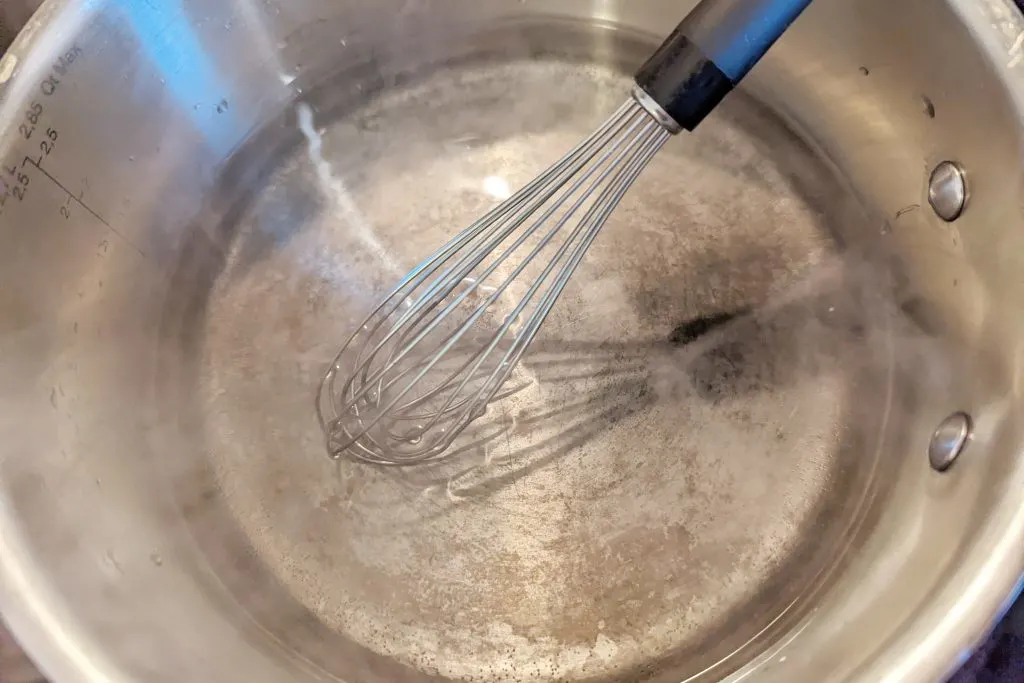
Step 3: In the same saucepan, using water from the poached eggs, add the remaining ingredients apart from tofu, noodles, and scallions.
Gently simmer over medium heat for 15 minutes to maximize flavor.
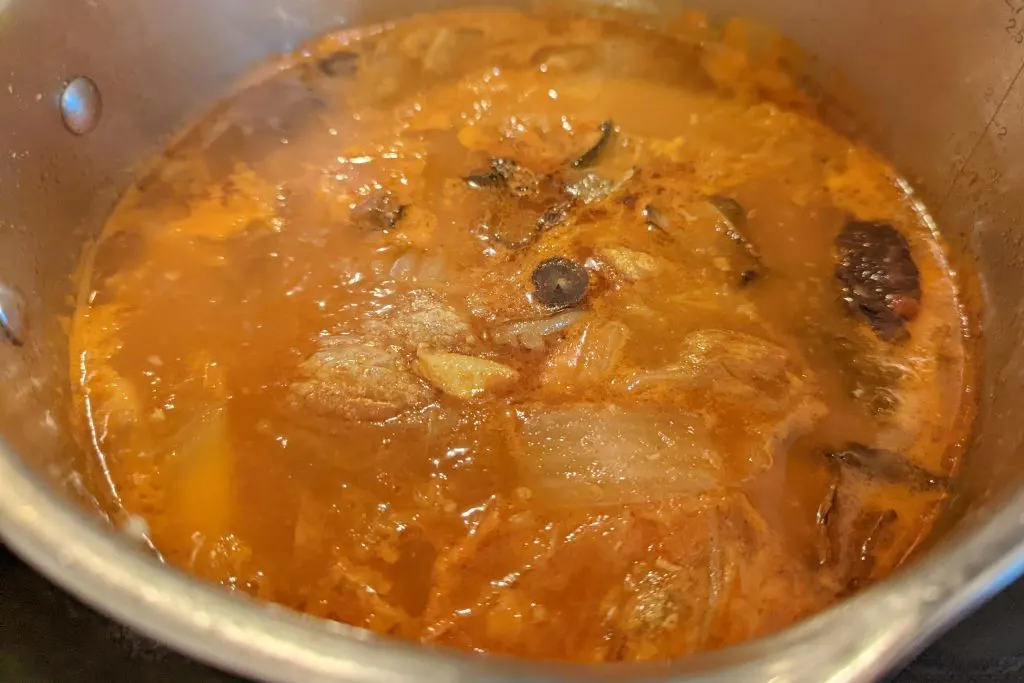
Step 4: Add tofu and cook for another 3 minutes.

Step 5: Stir the reserved noodles into the ramen and cook for another minute.
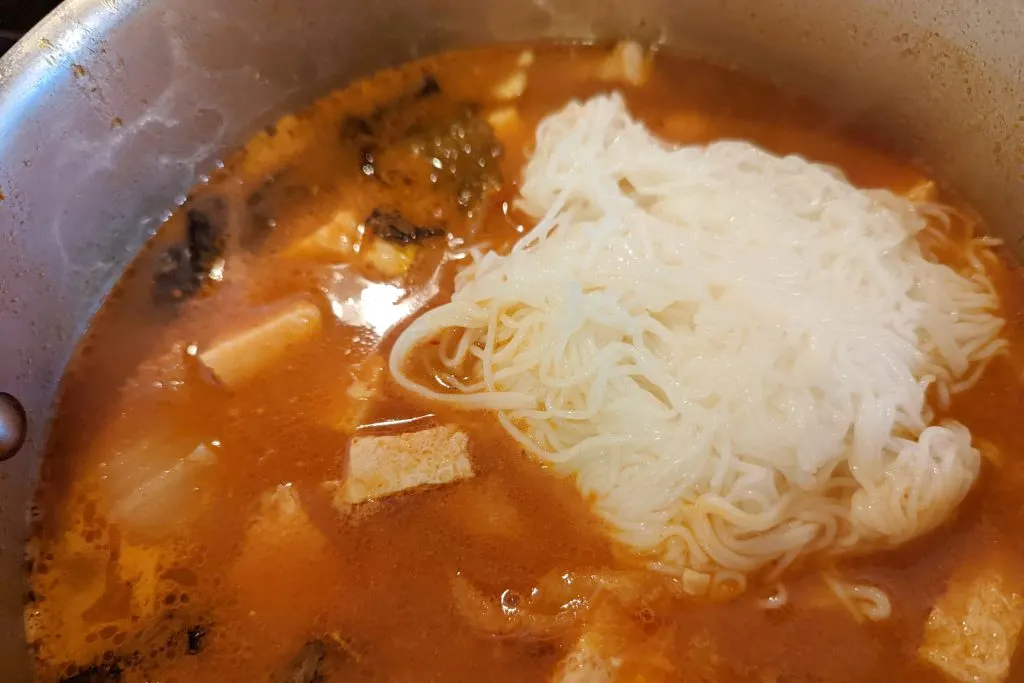
Step 6: Garnish with scallion greens and top with the reserved poached eggs. Enjoy!
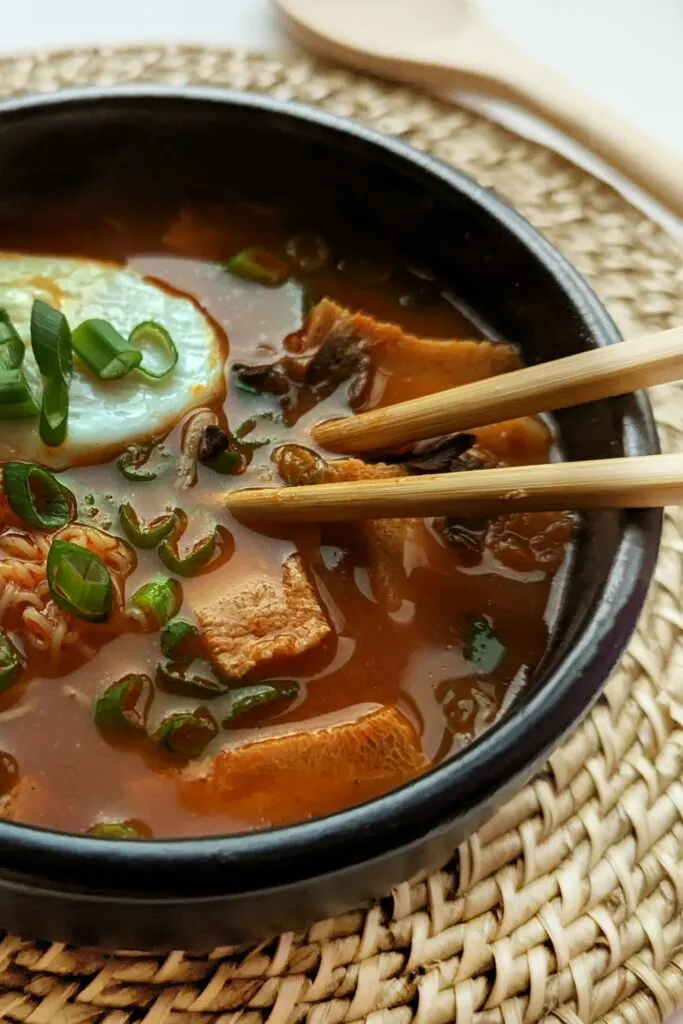
How to Prepare Shirataki Noodles
- Choose the Right Brand: I was not a fan of shirataki noodles for the longest time, even if they made some of my favorite meals possible on a low-carb diet. Something about the texture and smell was off, and I couldn’t get past it; what I discovered is that brand matters! House Foods is by far the best-tasting brand out there, and they have a variety of noodles, making them more versatile. I use angel hair shirataki noodles for this recipe since they most resemble ramen to me.
- Prepare your Noodles: Please, please, please, do not add the noodles straight into your ramen! For best results, drain the liquid from the packaging. Next, soak the noodles in water for 10-15 minutes, then rinse, rinse, rinse. Now you’re ready to add them to your ramen.
Expert Tips
- I learned from Hyosun over at Korean Bapsang that when using kimchi, older is better. I find this especially true in soup (Jjigae) and ramen (ramyon).
Searching for More Like This?
If you love this recipe, try one of these low carb favorites!
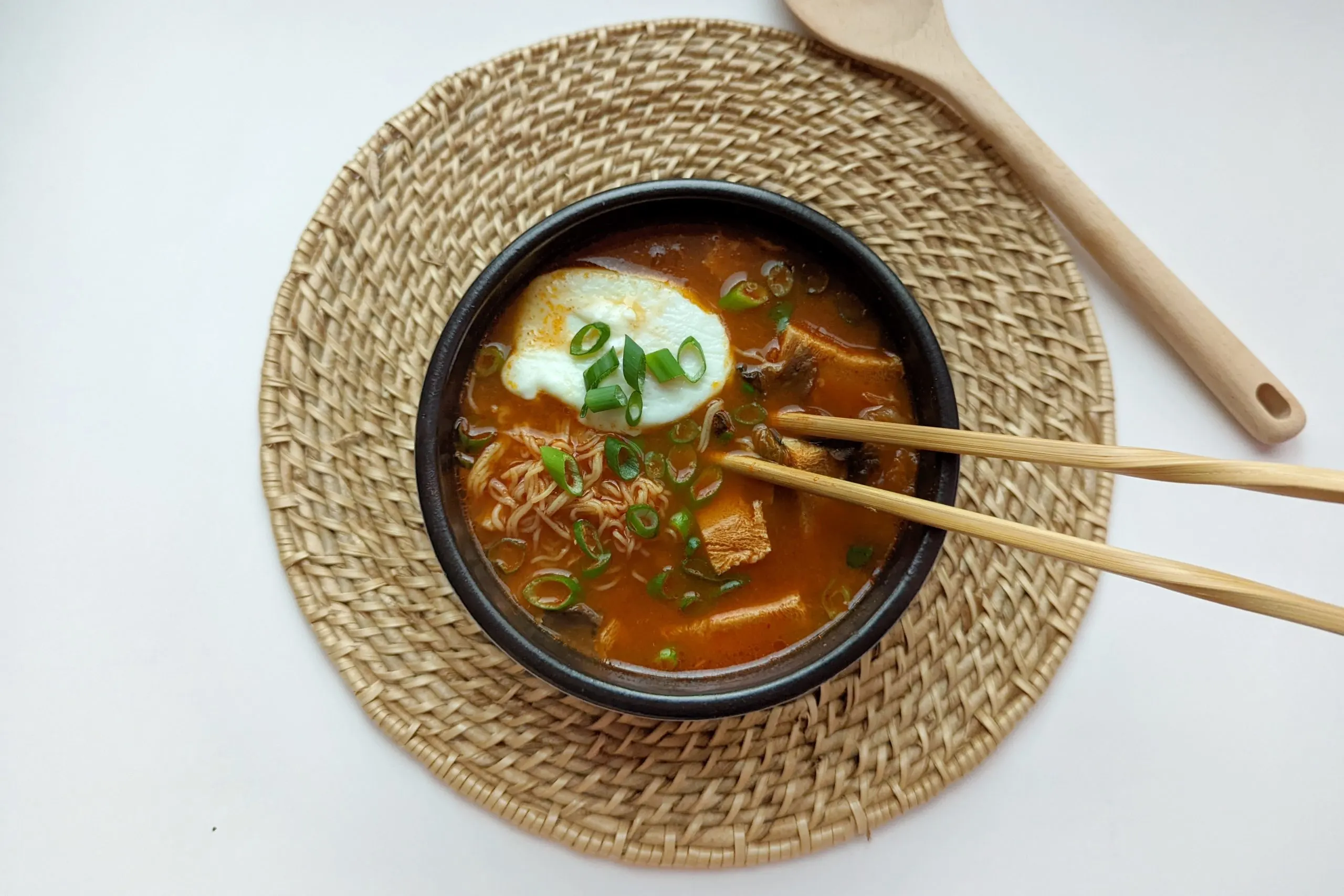
What to do With the Leftovers
- Refrigerate – Store the leftovers in an airtight container and eat the ramen within two days of making it.
- Freeze – Normally, freezing ramen is completely fine! However, since this recipe includes shirataki noodles, I would not recommend it. The noodles are partially made up of water, and because of that, they do not defrost well.
- Reheat – Warm leftover low carb ramen on the stovetop or in the microwave.
Frequently Asked Questions
Is Korean low carb ramen keto?
This ramen is a great low-carb alternative to spicy Korean instant noodles. I took a moment to calculate the macros for you using Whisk.
• Carbs: 14 net carbs
• Protein: 15g
• Fat: 15g
These calculations are for one bowl of ramen.
What are shirataki noodles?
Shirataki noodles come from konjac root (a yam plant), consisting of mostly water and soluble fiber.
Where can I buy shirataki noodles?
Most major grocery stores carry shirataki noodles, though they often take on a different name; one of the most popular brands is Miracle Noodles.
I prefer the House Brand shirataki noodles; find them in your local Asian market or Whole Foods. But trust me, it’s worth the extra trip!
Why is Korean ramen so spicy?
You can attribute the heat to the two Korean staple ingredients, gochugaru, and gochujang in the broth. If you’re sensitive to spice, use one tablespoon of gochujang and one teaspoon of gochugaru.
More Low Carb Recipes:
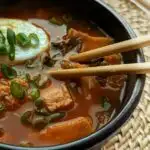
Korean Low Carb Ramen
- 4 eggs
- 5 cups water
- 1 teaspoon distilled white vinegar
- 1 tablespoon Beef Better Than Bouillon
- 2 tablespoons soy sauce
- 2 teaspoons sesame oil
- 2 tablespoons kimchi, cabbage, and juice
- 3 tablespoons Gochujang
- 2 teaspoons Gochugaru
- 4 cloves garlic, minced
- 1 tablespoon ginger paste
- 1 cup shiitake mushrooms, dried
- 1 package Silken Tofu broken into pieces
- 1 package Shirataki Noodles angel hair, washed and rinsed
- 1 bundle Scallions greens, thinly sliced, to garnish
For the Poached Eggs:
- In a saucepan, bring water to a boil.
- Stir the vinegar into the water and swirl using a whisk. While the water is moving, add the eggs and cook for 3 minutes.
- Remove the eggs and set them aside.
For the Ramen:
- Rinse and soak shirataki noodles in water, and set them aside.
- In the same saucepan, using water from the poached eggs, add the remaining ingredients apart from tofu, noodles, and scallions. Gently simmer over medium heat for 15 minutes to maximize flavor.
- Add tofu and cook for another 3 minutes.
- Stir the reserved noodles into the ramen and cook for another minute.
- Garnish with scallion greens and top with the reserved poached eggs to serve. Enjoy!
- The nutritional information shown is an estimate provided by an online nutrition calculator. It should not be considered a substitute for professional advice.

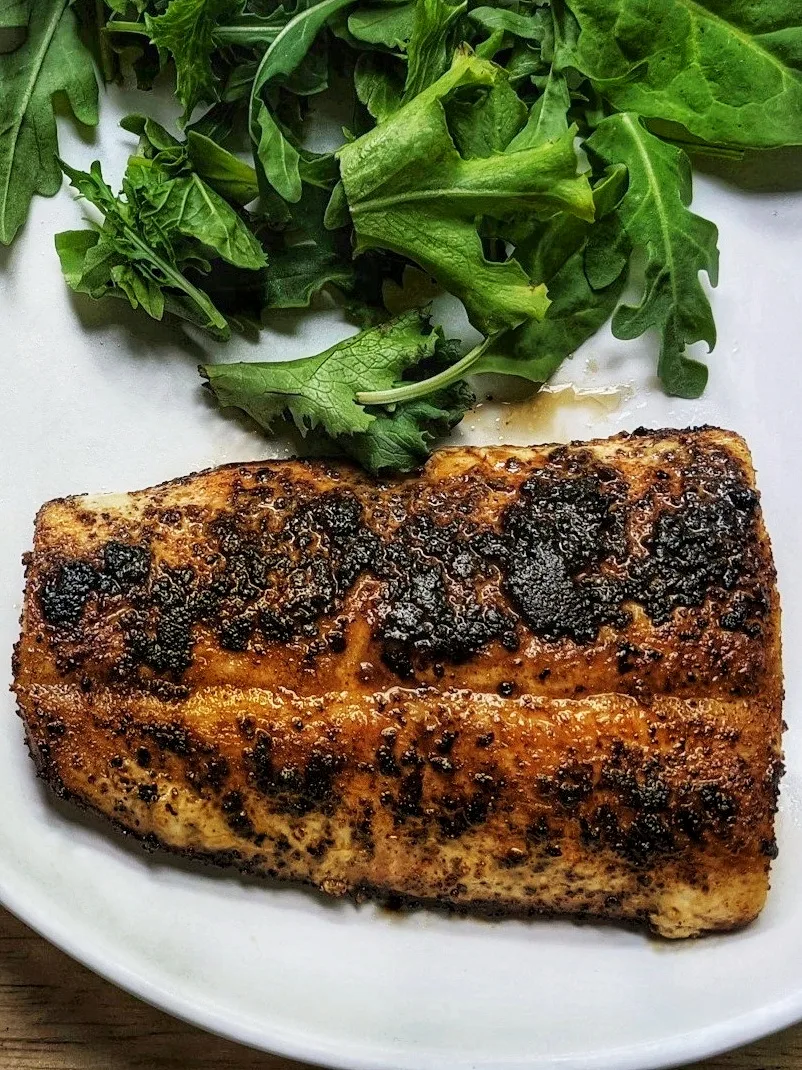
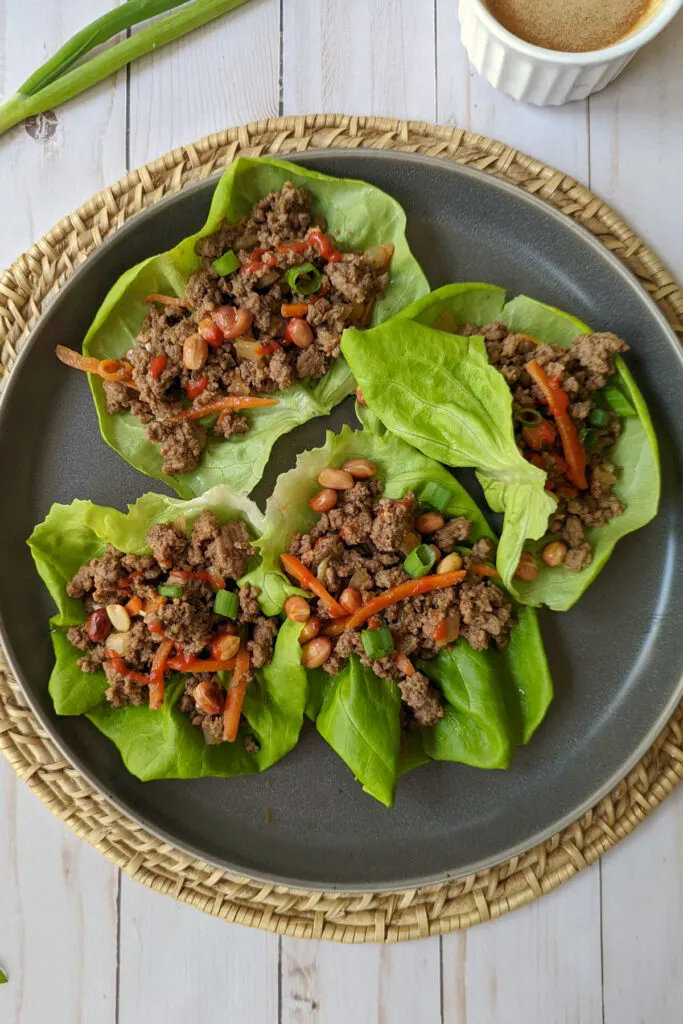

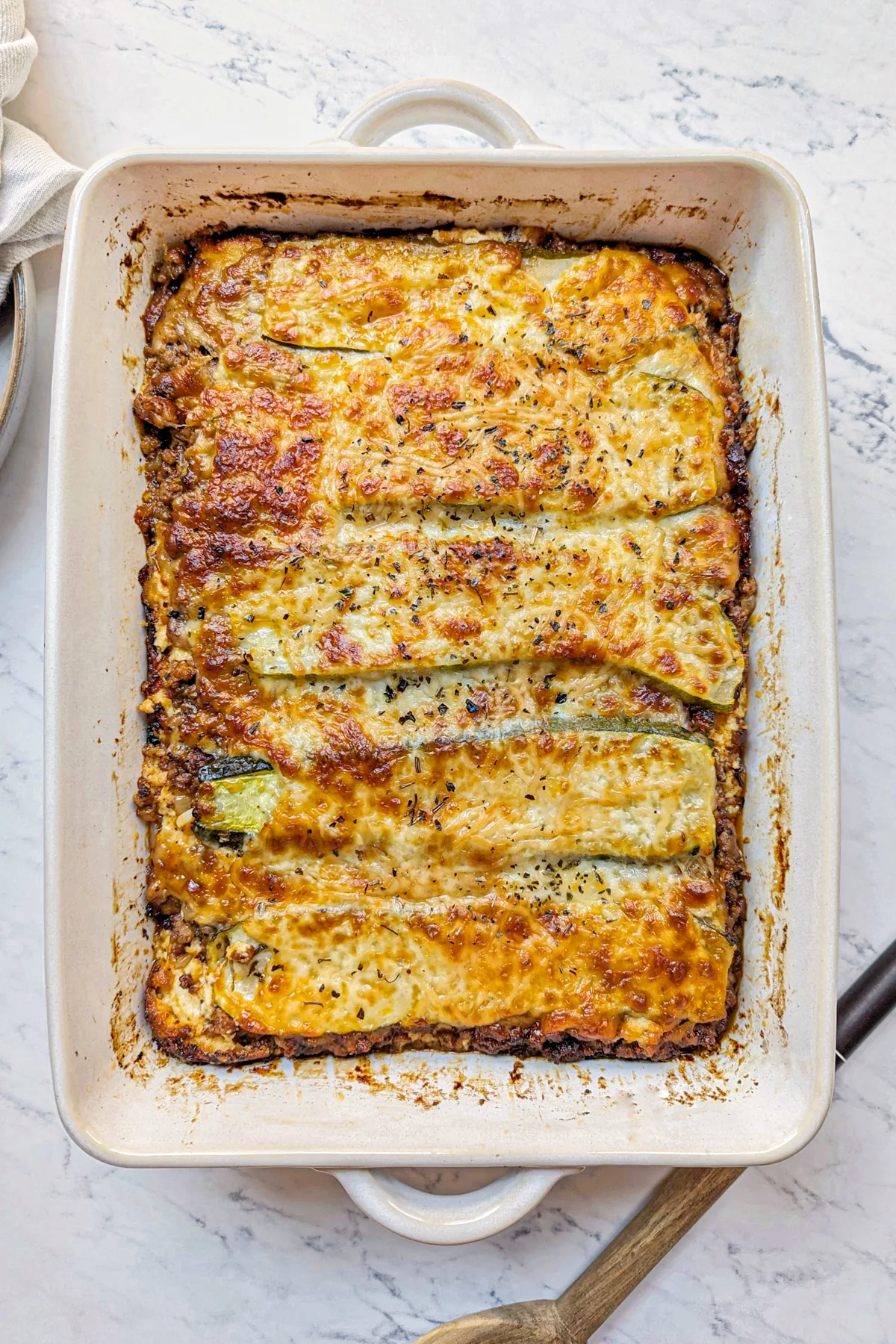
Jenna K.
Thursday 16th of February 2023
I tried the Korean low-carb ramen recipe and was amazed at how much flavor it had! It's perfect for cold winter nights, and it's so filling without leaving me feeling heavy. I'll definitely be making this again. Thanks for the great recipe!
RJ
Thursday 19th of May 2022
This has to be one of my favorite ramen recipes. It calls for authentic Korean ingredients and you can make it healthier by using low carb or keto noodles.
Tressa Jamil
Sunday 12th of June 2022
It's nice to be able to enjoy a low carb comfort food.